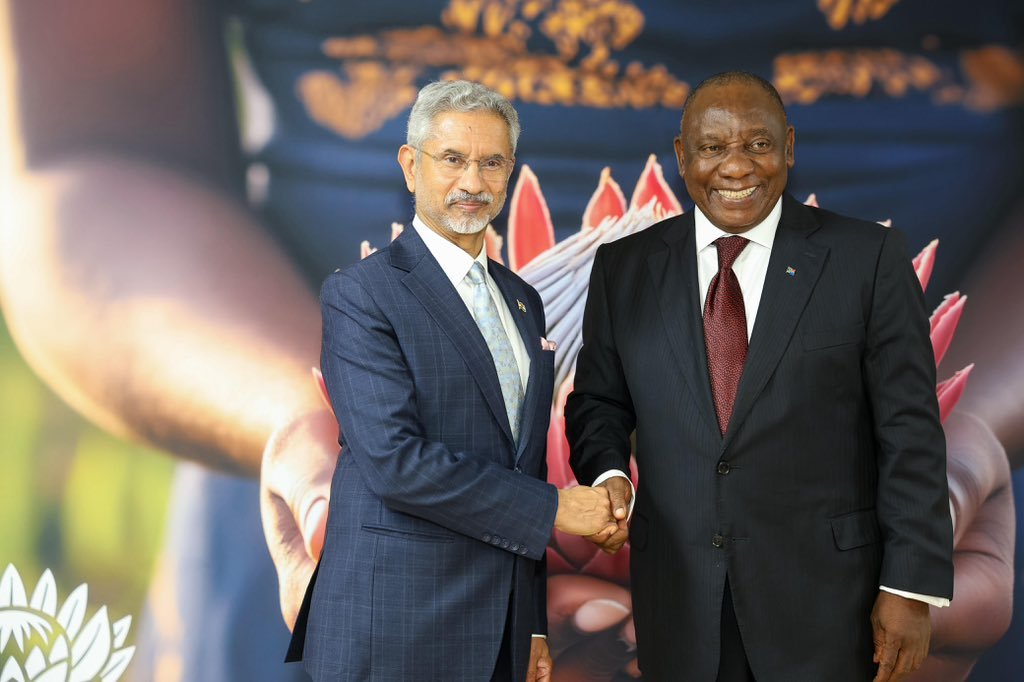By implementing next-generation naval aviation technologies, the Indian Navy is putting itself in a strategic position to increase its maritime dominance. This program is a component of the larger Atmanirbharta vision to attain self-reliance, which is described in the newly published roadmap “Aatmanirbhar Indian Naval Aviation – Technological Roadmap 2047.” This report highlights the necessity of developing platforms, weapons, and sensors domestically in order to guarantee operational efficacy and readiness in the Indo-Pacific area.
With a roadmap that includes the development of advanced unmanned aerial systems (UAS), long and medium-range maritime reconnaissance aircraft, and fifth-generation deck-based fighter aircraft, India is expanding its naval aviation capabilities. This program is a component of a larger plan to maintain maritime security in the Indian Ocean Region (IOR) and improve the operational effectiveness of the Indian Navy.
Currently being developed by the Aeronautical Development Agency (ADA) and produced by Hindustan Aeronautics Limited (HAL), the TEDBF is a multirole combat aircraft intended for carrier operations. With its twin engines and canard delta wing configuration, it will be able to function effectively from Indian aircraft carriers like the INS Vikramaditya and INS Vikrant.
The TEDBF can carry out a number of tasks, such as electronic warfare, air superiority, and anti-ship warfare. It can reach Mach 1.6 and will weigh no more than 24 to 26 tons when it takes off.
Production is expected to begin around 2035, with the first flight scheduled for 2026. The goal is induction into service by 2038.
India’s naval aviation capabilities have advanced significantly with the domestic development of the Deck-Based Multi-Role Helicopter (DBMRH) by Hindustan Aeronautics Limited (HAL). This helicopter was created especially to strengthen the Indian Navy’s shipborne aviation division, supporting the larger goals of defense modernization and independence.
An Indian Multi-Role Helicopter (IMRH) variant specifically designed for naval operations is the DBMRH. It seeks to meet a variety of operational needs, such as reconnaissance, anti-surface, and anti-submarine warfare.
With a maximum take-off weight of roughly 12.5 tonnes, the DBMRH is anticipated to be outfitted with cutting-edge features like a four-bladed tail rotor and a five-bladed main rotor. In order to improve situational awareness and operational efficiency, it will also feature a cutting-edge Airborne Early Warning (AEW) variant equipped with an advanced radar system.
With about 300 aircraft at present, including a range of helicopters and maritime patrol aircraft, the Indian Navy is actively updating its fleet. The goal of this modernization initiative is to guarantee self-reliance in defense manufacturing and improve operational capabilities.
A number of crucial areas are the focus of the Indian Navy’s modernization strategy:
There are plans to integrate cutting-edge platforms such as airborne early warning systems, maritime reconnaissance aircraft, and deck-based fighters.
With a focus on the “Atmanirbhar Bharat” initiative, the Navy wants to build up domestic aircraft manufacturing and maintenance capabilities.
With 22 Sikorsky MH-60R helicopters already ordered, the Navy is seeking to acquire more for use in search and rescue missions and anti-submarine warfare.
By 2050, the Indian Navy wants to greatly increase the size of its fleet, aiming for 500 aircraft and strengthening its maritime capabilities by building new ships. The Navy is committed to increasing domestic defense production while meeting operational demands, as evidenced by the 64 ships currently under construction.
Future purchases will concentrate on cutting-edge platforms, such as amphibious aircraft and carrier-borne airborne early warning systems.
For example, the LM2500 marine gas turbine engines will power new Next Generation Missile Vessels (NGMVs), improving speed and stealth capabilities. Partnerships with companies such as GE Aerospace are essential.
The goal of the collaboration with Hindustan Aeronautics Limited (HAL) is to enhance domestic propulsion technology capabilities.
To stay ahead of possible enemies, the Indian Navy is investigating cutting-edge technologies like loitering munitions, hypersonic missiles, and direct energy weapons.
Another crucial area of attention for improving operational effectiveness is the incorporation of unmanned systems into naval operations.
According to Admiral Dinesh Tripathi, the objective is to establish a strong ecosystem that is entirely based in India by 2047 and to be completely self-reliant on all naval aviation platforms and technologies.
Every five years, the vision document will be reviewed to reflect the quick changes in technology.
With a strong focus on indigenization and technological advancement, Indian naval aviation is poised for significant change in the future. The Indian Navy hopes to improve its operational capabilities and successfully protect its maritime interests by making investments in next-generation platforms and cultivating strategic alliances. India’s defense posture is strengthened by this proactive approach, which also establishes India as a powerful player in regional maritime dynamics.
